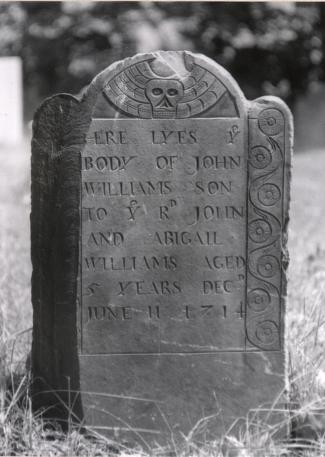




Advanced Search
This theme in other eras: 1680-1720 | 1780-1820 | 1880-1920
|
Parenthood in the eighteenth century often included the ordeal of watching one or more of your children die. New England was actually a healthier place to live than the English towns and cities from which the settlers came. Nevertheless, the absence of immunizations, fever-reducing drugs and antibiotics meant that illness claimed the lives of many infants and young children. The religious culture of the period assigned to every earthly event a divine cause--if a child died, it was God's will. A Puritan minister acknowledged the terrible and inscrutable power of God over life and death as he mourned in 1724 the deaths of New England's children: "O how unsearchable the Judgements of God, and His Ways past finding out. The lamps but just litt up, and blown out again."
|
Gravestone of John Williams Jr.
|
| |
Home | Online Collection | Things
To Do | Turns
Exhibit | Classroom | Chronologies | My
Collection
About This Site | Site Index | Site Search | Feedback
